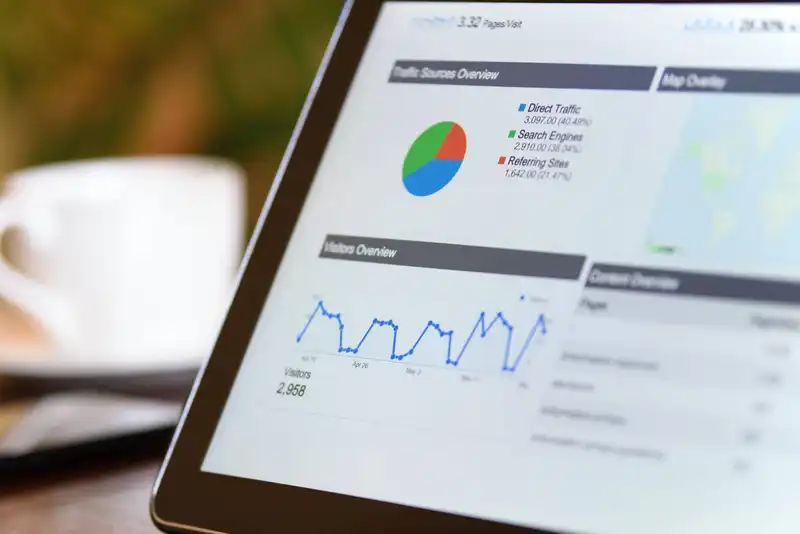9 Sales Analysis Methods and How to Perform Them
Introduction to Sales Analysis

Sales analysis refers to the process of mining data sources to assess sales performance and progress towards meeting company goals. By regularly examining key metrics, business teams will gain data driven insights into how well their products or services are doing in the market.
Additionally, performing sales analysis will help with forecasting demand and highlighting market opportunities that brands can take advantage of to generate more revenue.
9 Types of Sales Analysis
Companies should regularly conduct sales analytics to have full visibility into their operation, as well as their consumer base's shopping behavior. Every business will have different sales analysis report techniques due to its distinctive goals.
1. Sales Trend Analysis

This refers to identifying patterns using sales data from a given time frame. For example, a company may notice one of their products experienced a micro trend, in which its popularity either rose or decreased during the timespan of a week.
A macro trend, on the other hand, is when there is a clear shift in demand for many products over a long period, like a quarter.
Management can track their progress easier and understand patterns in customers' needs, geography, and product popularity if they analyze sales in this way.
2. Sales Performance Analysis
Performance analysis is used to determine whether the sales strategy is effective and if the sales team is performing well. These sales reports focus on assessing financial data, such as revenue and sales targets.
By using this method, executives can identify vulnerabilities in the company's sales process and strategize ways to grow revenue and improve price margins.
3. Predictive Sales Analytics
Predictive sales analytics is the use of software to forecast potential threats and opportunities in the future. This technique can help ensure accurate forecasts and enhance sales conversion, as companies will be able to predict customer needs and make personalized campaigns to target them.
4. Sales Pipeline Analysis
Pipeline analysis entails examining the shopping journey a customer goes through before they buy a product or decide to not make a purchase. Understanding a consumer's engagement with a brand will help executives improve their sales tactics to generate more orders.
5. Product Sales Analysis

Businesses that carry many different types of goods should periodically perform product sales analysis to identify underperforming items. These goods can overcrowd a brand's catalog and negatively impact profitability.
By looking at product sales and customer demographics, executives can make informed and constructive decisions to protect their bottom line, like removing slow-moving products from inventory.
6. Sales Effectiveness Analytics
This form of analysis allows management to track their sales team's effectiveness in bringing in revenue. These reports highlight ways in which sales representatives can improve their performance by leveraging selling opportunities when interacting with shoppers.
7. Diagnostic Analysis

A diagnostic analysis is when executives strategize reasons for trends in sales. For instance, a coffee shop may justify its steady decrease in sales due to the new breakfast restaurant that opened across the street.
8. Prescriptive Analysis
Prescriptive analytics involves predictive analytics, in which managers must forecast customer sales and demands. It then uses machine learning to generate the best course of action, based on data, for a specific event.
9. Marketing Research
The traditional technique of market research usually encompasses sending surveys to customers in-person or through the phone or email. This helps with identifying competitors and whether the brand is meeting expectations.
With customer feedback, businesses can understand their needs and find weaknesses in the sales team. Effective improvements can then be implemented to enhance performance.
3 Steps to Perform a Sales Analysis

After management teams decide and select the best sales analysis method that aligns with their needs, they can create a sales report by following these 3 steps.
1. Choose Which Data to Analyze
In order to create informative and accurate reports, executives must collect and assess the right sales data.
Identifying the necessary metrics begins with determining which sales goal the team will focus on. The most common objectives are
- Effectiveness of sales training
- Finding the best selling inventory
- Uncovering typical attributes of customers
Then, a time frame, data source, and performance metric that are relevant to the specific goal should be pinpointed. For instance, if a business wants to know how well their popular items sell, they would look at sale quantities, customer demographics, and sales targets.
2. Select a Sales Analysis Tool

A sales analysis tool can streamline the process of data collection and interpretation. Many businesses use inventory management solutions with ordering capabilities because the software archives historical sales data and provides insightful reports in a user-friendly interface.
3. Share Data Reports with Stakeholders
Once a sales analysis is completed, businesses should share key results with relevant stakeholders, such as investors and CEOs.
It is recommended that these reports look presentable and are easy to read. Typically, the use of graphs and visuals will help make data interpretation accessible.





